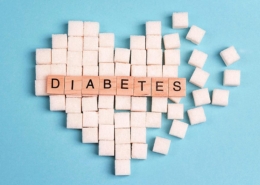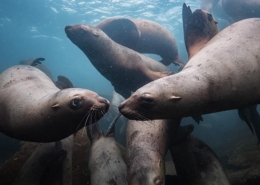Safety versus Performance in Freediving
Article by Brian Shreve
When we first learn to freedive, we perform numerous skills in both the pool and in open water. Among the most important of these skills are weight-check skills. As freedivers, we need enough weight to perform the dives, but at the same time need to avoid being overweighted to help prevent accidents and fatigue.
All PFI Freediving courses use three separate skills to verify proper weighting:
- A surface safety weight check
- A 5m safety weight check
- A 10m or deeper neutral buoyancy weight check (Advanced Freedivers are often neutral beyond 10m)
Let’s look at each of these in more detail.
Surface Safety Weight Check
There are two times a student will perform a surface weight check. The first time is when the student enters the water. This is only to provide a very roughly estimate of the amount of weight the student will need to be near neutral at 10m. Based on the exposure suit worn and the environment, the instructor assists the student in determining how much weight (if any) to start with. The diver then moves into deeper water, with all of the air “burped” out of their suit, remaining motionless and taking a peak inhalation. When ideally weighted, the diver will float with the water at about collarbone level, not shoulder.
If the diver sinks below this, some weight is removed, whereas a diver floating higher in the water adds some weight, and the exercise is repeated until the collarbone level is achieved. After that, the diver does a first level exhalation (think a sigh), and sinks slightly. The airway should still be at or above the water surface after that first level exhalation. If not, a small amount of weight is removed and the exercise repeated.
After the 5m and 10m weight-checks, this surface safety check is performed again. The primary purpose of this weight check is safety. It is used to ensure the diver will never drop below the surface should they experience a hypoxic event at the surface.
The 5m Safety Weight Check
The primary purpose of the 5m weight check is to verify the initial weighting from the surface weight check. The diver pulls down the line to 5m, turns, and stays motionless. The diver then performs a first level exhalation, letting go of the line or plate. If properly weighted, the diver will slowly start to float up toward the surface, without kicking, sculling, pushing up with hands, etc. If the diver sinks, they are overly weighted. Weight is removed at the surface and the exercise repeated until they are slightly positively buoyant at 5m and after a first level exhalation.
This exercise also contributes to safety. It verifies that the diver would float to the surface even if they blackout at 5m. As freedivers learn in their course, 90% of blackouts happen at the surface, and another 9% between 5m and the surface. The combination of the surface and 5m checks assures the diver is not overweighted even if they blackout and would arrive at the surface where help can be rendered.
The 10m Performance Weight Check
Unlike the previous two weight check skills, the purpose of the 10m weight check is performance driven. To do this check, the diver wears the amount of weight verified in the 5m weight check and pulls down the line to 10m, turns, and remains motionless. Releasing the line or plate, the diver should be neutrally buoyant. They will neither sink nor float at this depth when properly weighted. Small adjustments from the previous checks may be needed, and usually involve removing a small amount of weight due to wetsuit and lung compression.
By verifying proper weighting at 10m, the diver has set a transition point in their diving. This known depth is the transition point between positive and negative buoyancy. Once the diver descends past this point, they enter the sink phase of their dive and expend less energy below this point. Students will also learn in their PFI courses to count their kick cycles to this point. This is so that they will be able to closely estimate their depth in the water without having to constantly check their computer, making a more efficient dive.
In higher level courses, a different depth may be chosen as the neutral buoyancy point based on performance goals. A diver routinely diving to 40m, for example, may prefer a neutral buoyancy depth of 15m rather than 10m. This addresses both performance goals and also adds to diver safety.
While the above weight checks are required student skills in PFI courses, they are also practical and adaptable for dives after the course. They give the new freediver a set of tools to determine proper weighting for both safe and fun diving. Joining a PFI professional on open live dives will help further establish this routine for the students, so that they will have a better sense of the amount of weight they need based on changing conditions.











Zostaw odpowiedź
Chcesz dołączyć do dyskusji?Pomóż nam się rozwijać!